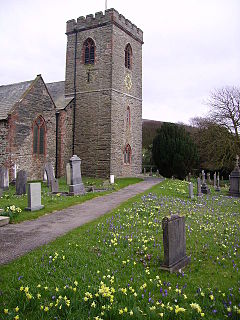Kirkby-in-Furness
| Kirkby in Furness | |
|---|---|
 St Cuthberts Church | |
Location within Cumbria | |
| OS grid reference | SD2282 |
| Civil parish |
|
| District | |
| Shire county | |
| Region | |
| Country | England |
| Sovereign state | United Kingdom |
| Post town | KIRKBY-IN-FURNESS |
| Postcode district | LA17 |
| Dialling code | 01229 |
| Police | Cumbria |
| Fire | Cumbria |
| Ambulance | North West |
| UK Parliament | |
Kirkby-in-Furness is a village in the Furness area of Cumbria, England. It is about 5 km south of Broughton in Furness and 8 km northwest of Ulverston. It is one of the largest villages on the peninsula's north-western coast, looking out over the Duddon estuary and the mountains of the Lake District.
History

Kirkby is an agglomeration of six different hamlets, namely: Soutergate, Wall End, Beck Side, Sand Side, Marshside and Chapels. The name Kirkby was used by the Furness Railway company during the construction of its Cumbrian Coast Line, and was the name they gave to the station which serves these hamlets. The name Kirkby is much older. The parish of Kirkby Ireleth, a name of Norse origin, is listed in the Domesday Book as one of the townships forming the Manor of Hougun which was held by Tostig Godwinson, Earl of Northumbria.[1]
Much of the housing and infrastructure in Kirkby arose due to the growth and development of the Burlington Slate Quarries, which are owned by the Cavendish family of Holker Hall and Chatsworth House in Derbyshire. Houses at Marshside and Incline Foot were originally built for quarry workers, and the railway linked up to the quarries following bogie lines. Present-day Kirkby-in-Furness is now primarily a commuter village but still provides a work force for the slate and agrarian work. The nearby Kirkby Moor rises to 334 m (1098 ft) above sea level which features a 12 turbine wind farm.
The village has an increasingly aged population due to the rise in house prices and lack of homes suitable for first time buyers. This has led to young families leaving Kirkby, buying cheaper houses in surrounding towns and villages. As a result, the intake for the local primary school has fallen dramatically in the last few years, and continues to fall.
See also
References
External links
 Media related to Kirkby-in-Furness at Wikimedia Commons
Media related to Kirkby-in-Furness at Wikimedia Commons

